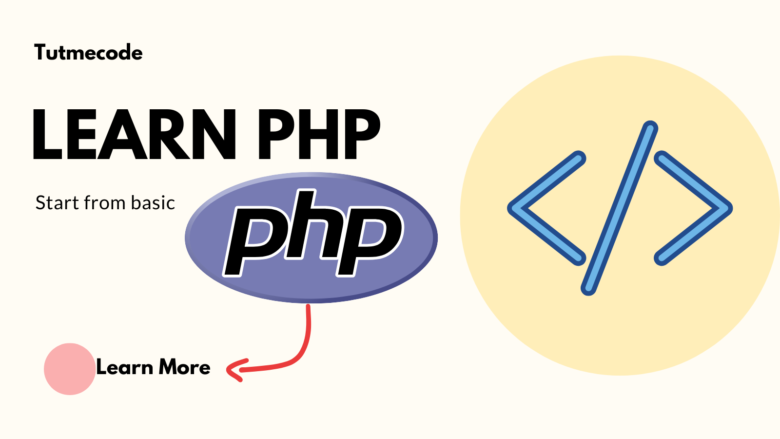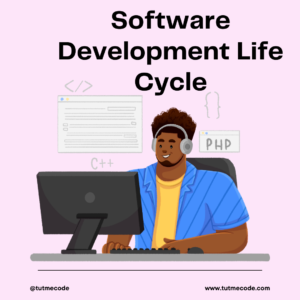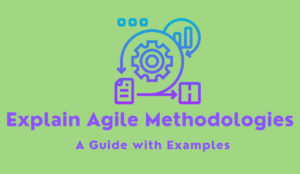PHP (Hypertext Preprocessor) is a powerful server-side scripting language widely used for web development. It is known for its simplicity, versatility, and extensive community support.
This PHP tutorial aims to provide a comprehensive overview of PHP, starting from the basics and progressing toward more advanced concepts. Each topic will be accompanied by PHP code examples to help you grasp the concepts effectively.
- Getting Started with PHP
To begin, you need a web server with PHP installed. We’ll guide you through the installation process and show you how to run your first PHP script.
On most of the servers, .php is the default extension for PHP files.
To run PHP you must need a server like Apache server and of course, PHP is a must to install. To save dynamic data you also need MySql as a database.
Or what you can do is install a combined package like
1-Wamp – http://www.wampserver.com/en/
2-Xampp – https://www.apachefriends.org/download.html
After successful installation from whatever it is you can check by creating and php page and adding this script to your page and running it on your server –
<?php phpinfo(); ?>
Reference – https://www.php.net/
You’ll learn about variables, array functions, date functions, string functions, data types, operators, and control structures such as conditionals and loops.
<?php $name = "John"; $age = 25; echo "Hello, $name! You are $age years old."; ?>
- Working with Forms and User Input
PHP is commonly used to handle user input from HTML forms. We’ll demonstrate how to retrieve user-submitted data and process it. You’ll learn about superglobal variables like $_GET and $_POST, form validation, and sanitization techniques.
<form action="process.php" method="POST"> <input type="text" name="username" placeholder="Enter your username"> <input type="password" name="password" placeholder="Enter your password"> <input type="submit" value="Submit"> </form> <?php $username = $_POST['username']; $password = $_POST['password']; // Process the form data ?>
- Working with Databases and MySQL
PHP has excellent database integration capabilities. We’ll cover connecting to a MySQL database, executing queries, and retrieving results. You’ll learn about prepared statements, sanitizing user input to prevent SQL injection and basic database CRUD operations.
<?php
$conn = mysqli_connect("localhost", "username", "password", "database");
// Execute a SELECT query
$result = mysqli_query($conn, "SELECT * FROM users");
// Fetch and display the results
while ($row = mysqli_fetch_assoc($result)) {
echo $row['name'] . "<br>";
}
// Close the connection
mysqli_close($conn);
?>
PHP supports object-oriented programming, allowing you to create reusable and modular code. We’ll explain the fundamentals of OOP, including classes, objects, properties, and methods. You’ll also learn about inheritance, encapsulation, and polymorphism.
<?php
class Car {
private $brand;
private $color;
public function __construct($brand, $color) {
$this->brand = $brand;
$this->color = $color;
}
public function drive() {
echo "Driving the $this->color $this->brand.";
}
}
$myCar = new Car("Toyota", "blue");
$myCar->drive();
?>
- Handling Errors and Exceptions
Bugs and errors are an inevitable part of software development. We’ll demonstrate error handling techniques in PHP, including error reporting, exception handling, and logging errors to aid debugging and improve application reliability.
<?php
// Set error reporting level
error_reporting(E_ALL);
// Example of catching exceptions
try {
// Code that may throw an exception
} catch (Exception $e) {
echo "An error occurred: " . $e->getMessage();
}
?>
Conclusion
In this PHP tutorial, we covered the fundamentals of PHP programming, including variables, control structures, forms, databases, OOP, error handling, SOLID Principles, and more. By practicing the code examples and exploring further, you’ll gain a solid foundation to build dynamic and interactive web applications using PHP. There are certain best practices and standards that every developer must follow while writing code in PHP. You can learn more about them here.
Nowadays many PHP frameworks are widely used.
Remember to consult the official PHP documentation and engage with the vibrant PHP community for additional resources and support on your PHP journey. Happy coding!




